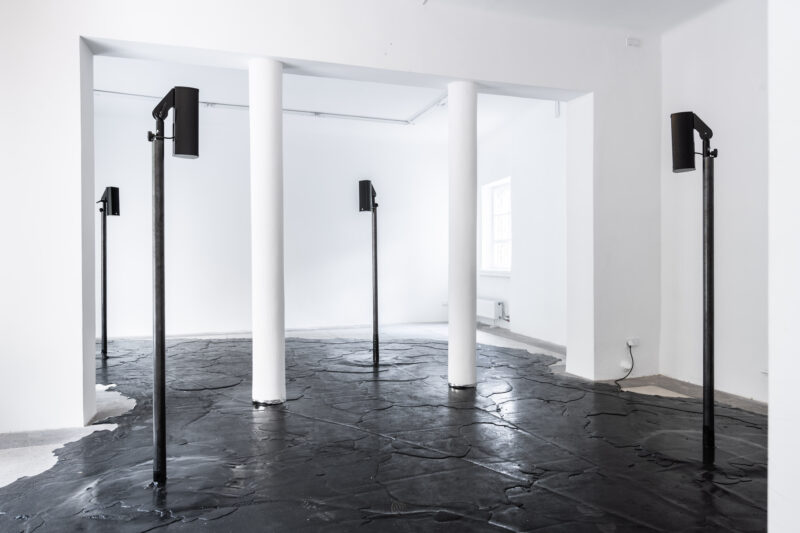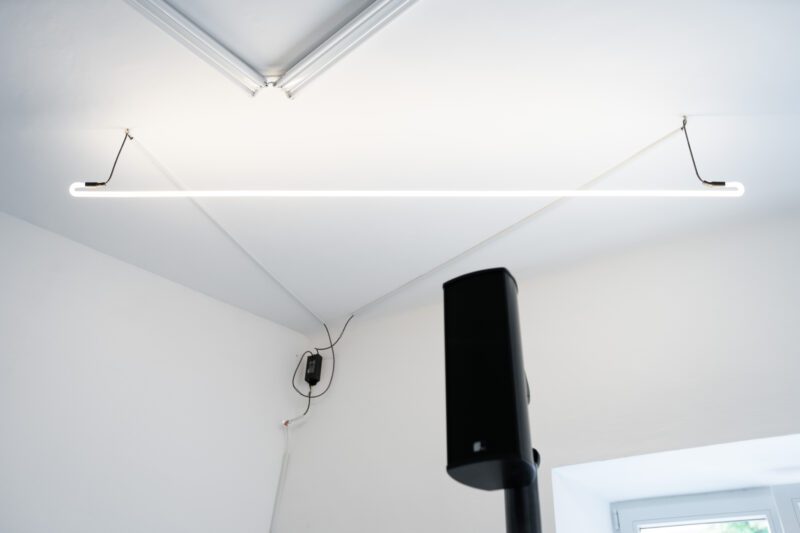







Tar, bitumen, metal, 4-channel sound, dimensions variable, 2023
Synthetic Exercises is an installation centered around a lake of bitumen laid on the floor. The material points to the work’s origin story: the surprising link between oil exploration, Auto-Tune, and AI border surveillance. The same seismic-wave algorithms used to find oil (bitumen) were adapted by their inventor to create the famous voice-correcting software. The soundscape, emerging from this liquid pool, is built from the sonic errors of a subverted AI “lie detector” and processed heavily with Auto-Tune, exposing a shared logic of extraction and control—from geology to biometric policing.
Made with the support of ZKM | Center for Art and Media, BALTIC Centre for Contemporary Art, and The Creative Industries Fund NL